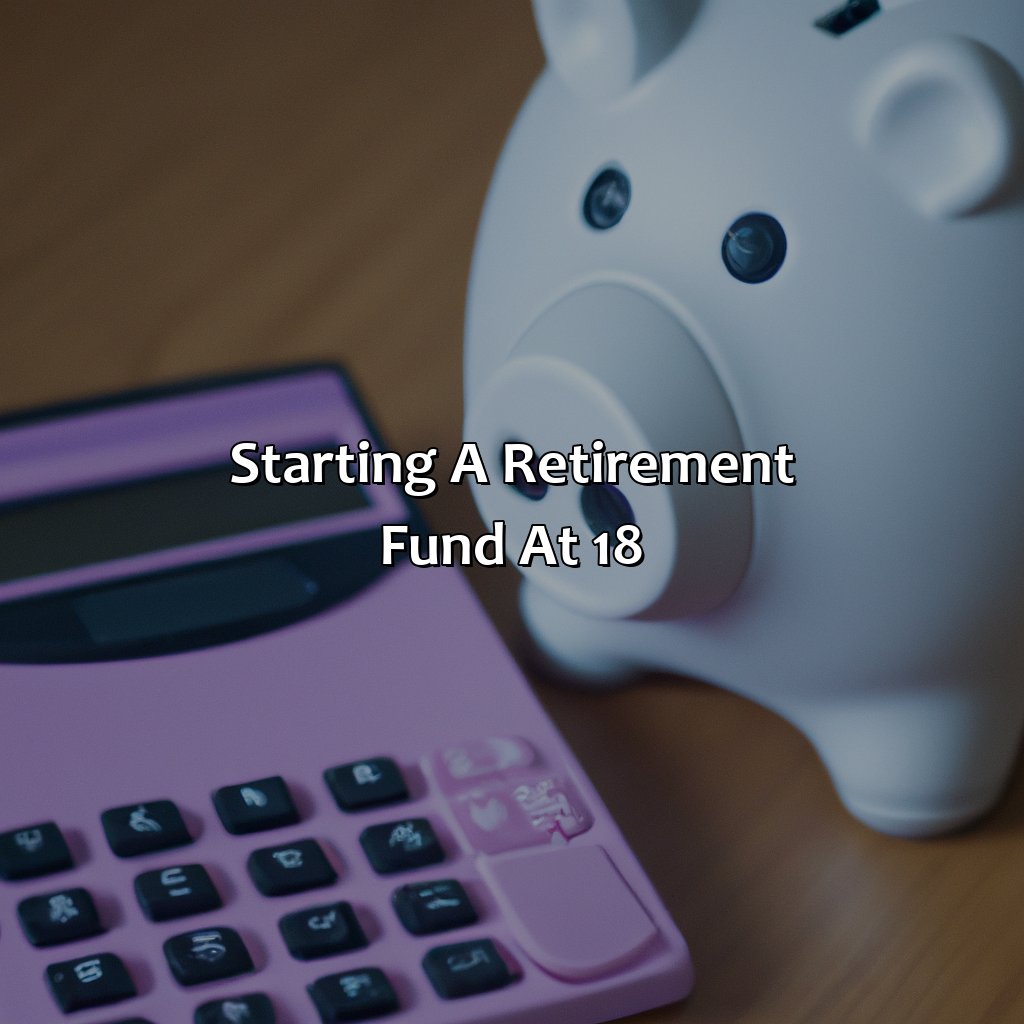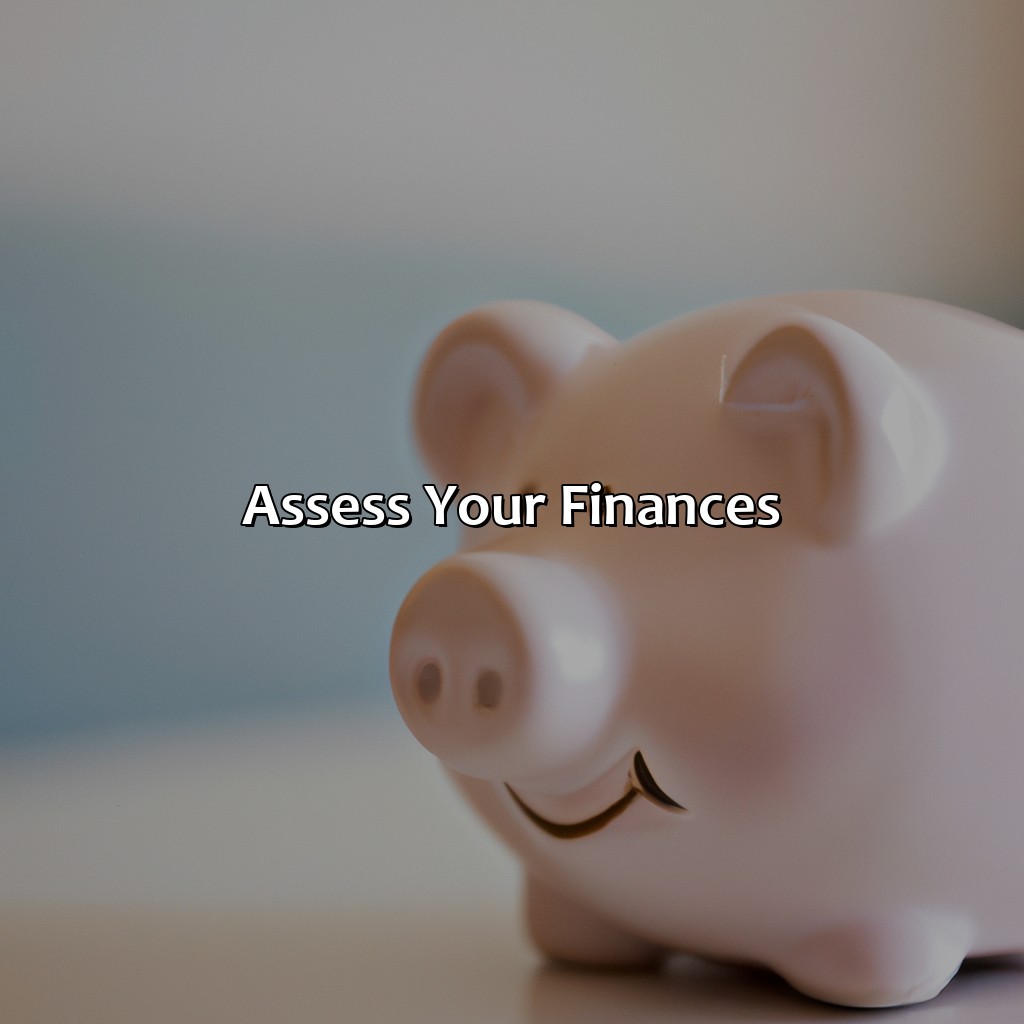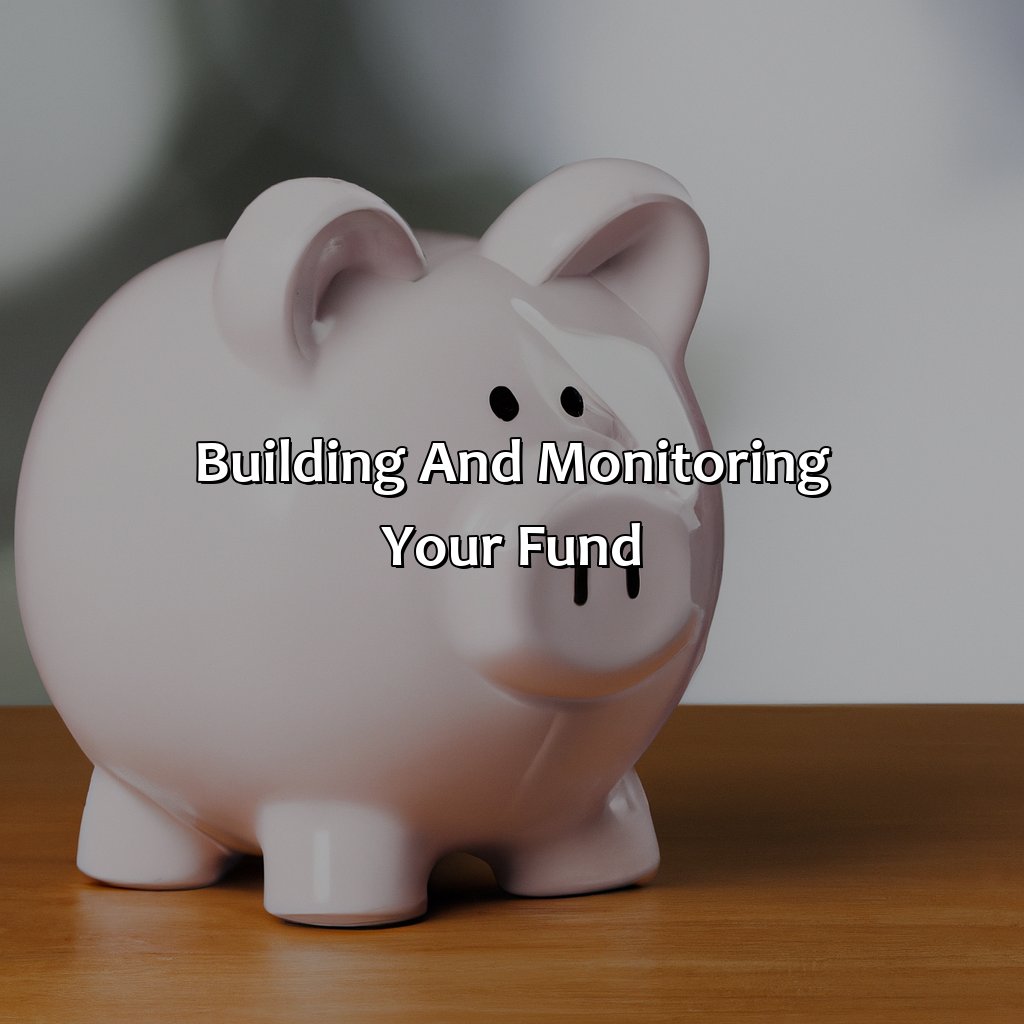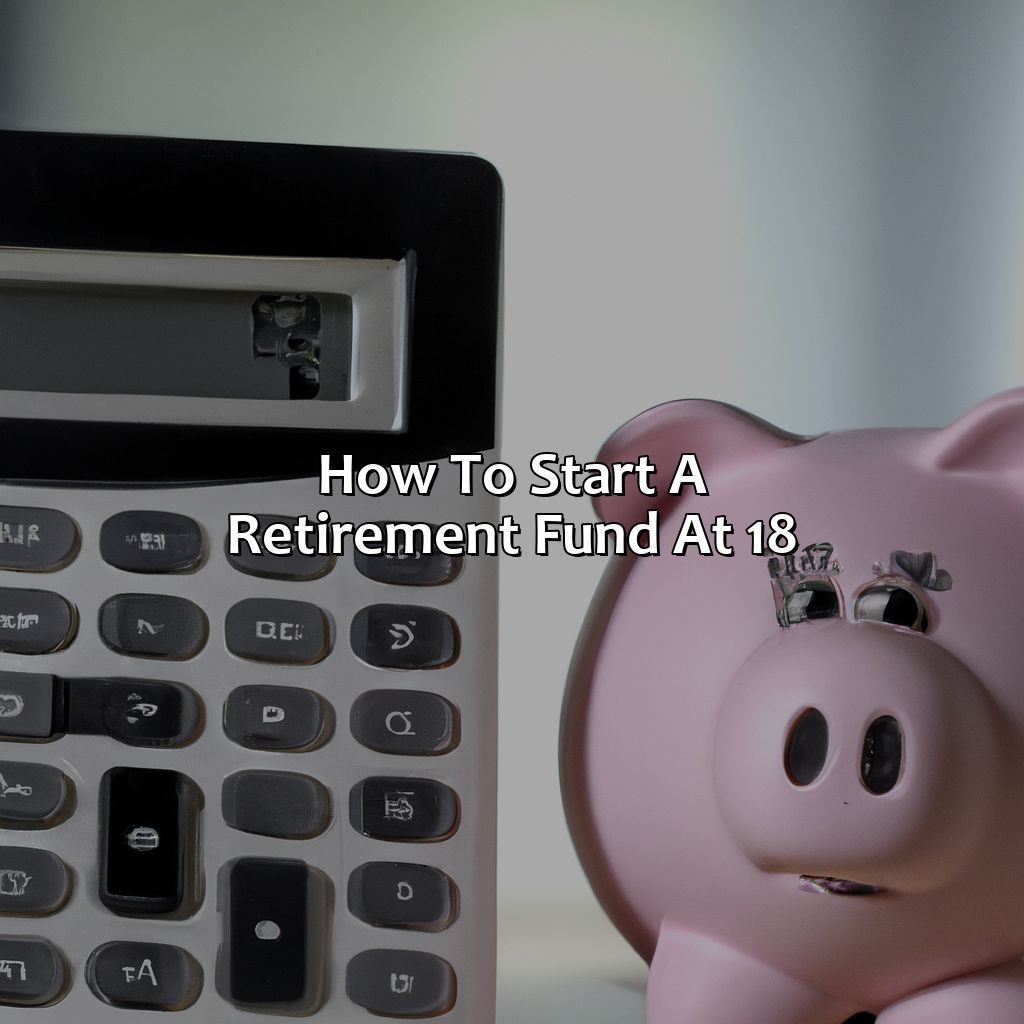How To Start A Retirement Fund At 18?
Key Takeaway:
- Starting a retirement fund at 18 provides a significant advantage: By starting early, you have more time to accumulate wealth and take advantage of compounding interest over the long-term.
- The benefits of starting early outweigh the costs: Even small contributions made early in life can add up to a substantial retirement fund due to the effects of compounding interest. As a result, starting a retirement fund at 18 is a smart financial decision for any individual.
- Choose the right retirement account and investment strategy: Assess your finances, identify your long-term financial goals, and choose the best retirement account and investment strategy for your specific needs. It is important to regularly contribute and reevaluate your investment strategy to ensure that you are on track to reaching your retirement goals.
Are you a young adult struggling to decide how to start a retirement fund? Don’t worry – you’re not alone. In this article, we’ll show you the simple steps you can take to start planning for your future today.
Starting a Retirement Fund at 18
Why start a retirement fund at 18? It’s essential to understand why starting early is so important. There are many advantages in doing so, ones that could make a big difference to your financial future. Let’s take a look at why you should begin saving for retirement at 18 and the benefits it brings.

Image credits: retiregenz.com by Adam Washington
Why Start a Retirement Fund at 18?
Starting a retirement fund early is crucial for financial stability and security in old age. Investing in a retirement fund at 18 could help millennials accumulate wealth for their post-retirement life. By starting early, they get more time to achieve their retirement goals and enjoy the power of compounding interest, which makes small contributions grow into significant savings over time.
Investing in a retirement fund as an 18-year-old can provide unprecedented benefits.
- young people can take calculated risks since they have more time to recover from losses.
- investing during those early years leads to higher returns as the money has a more extended period to grow with compounded interest.
- lastly, setting aside just a small amount every month creates the habit of saving and builds financial discipline.
While most individuals believe that it’s too early to worry about retirement when they turn 18, experts suggest that starting at this young age eliminates future financial stressors and sets you on the path towards economic success.
It may seem like you won’t need to access your funds until far into the future; however, procrastinating can put you at risk of not achieving your desired standards of living in old age. The earlier you start contributing to your retirement account, even if the contributions are small or irregular at first, the better position you stand for long-term profitability.
One individual who started investing in her retirement fund at 18 shared her story about how she was amazed by how much it had grown when she hit her thirties. She learned firsthand about the advantages of being proactive with personal finances and insisted that any person under thirty years old should prioritize beginning their own savings plan.
Starting a retirement fund at 18 means you can retire earlier and spend your golden years not worrying about money, but instead worrying about how long it takes your grandkids to text you back.
Benefits of Starting Early
Starting Your Retirement Fund Early
Starting your retirement fund at an early age has numerous advantages:
- Securing a comfortable future: By beginning at the age of 18, you have more time to accumulate wealth and enjoy a worry-free life after retirement.
- Interest Compounding: The sooner you start saving, the more opportunities you have for investment growth through compound interest over time.
- Flexibility in Investment Choices: Starting early can give you freedom to invest in higher-risk assets which often yield better returns than low-risk ones.
It’s crucial to develop good financial habits right from the outset with a long-term vision.
To ensure you don’t miss out on enjoying your golden years, take action now and make sure you get expert advice on valuable investment options available – begin investing early!
Assessing your finances is like facing your deepest fears, except scarier because you can’t just shut your eyes and hope it goes away.
Assess Your Finances
At 18, you can begin your retirement fund by assessing your finances. To do this, two sub-sections must be tackled. These are Budgeting and Saving Strategies, and Identifying Long-Term Financial Goals. Together, they provide the solutions needed to get started.

Image credits: retiregenz.com by David Arnold
Budgeting and Saving Strategies
Budgeting and Money Saving Strategies for a Secure Future
Managing finances is an essential skill to build a secure financial future. Here are three key strategies for budgeting and saving money:
- Start with creating a realistic budget plan by analyzing your current expenses, reducing unnecessary costs, setting aside some amount for emergencies, and allocating funds for achieving your long-term goals.
- Consider automatic savings options like 401(k) or IRA accounts, which can help you save money consistently without much effort. Also, try to save small amounts regularly that can add up to significant savings over time.
- Look for ways to make extra money by leveraging your skills through freelancing or maximizing your income from part-time jobs while studying or working. It can provide you with additional cash flow to meet unforeseen expenses or invest in your future.
In addition to these strategies, building a retirement fund at an early age can reap huge benefits in the long run. Starting early gives you more time to enjoy compounding returns and make larger contributions over the years.
Secure Your Future by Taking Action Today
Don’t let procrastination rob you of a secure financial future. With the power of compounding interest and consistent investments, starting early will help you achieve financial freedom faster than ever before. So, take advantage of the opportunity now to secure tomorrow!
You may not know what you want for breakfast tomorrow, but identifying long-term financial goals at 18? Piece of cake.
Identifying Long-Term Financial Goals
When it comes to securing one’s financial future, setting long-term goals is crucial. Financial objectives are essential in attaining a prosperous life, and identifying them at an early age is even more critical. To establish the visions, individuals need to consider their income levels, expected expenditures, and current financial status. After that, planning for savings and investments can be done using various techniques.
One effective way to identify long-term financial goals is by assessing one’s priorities, including short term desires as well as long-term aspirations. Individuals should appraise their income and expenses over the years and consider factors such as inflation. Analyzing diversification options can help ensure that they have multiple investment streams across various asset classes.
Moreover, an individual must have a detailed retirement plan in place when creating long-term objectives. Starting a fund for retirement saving immediately leads to earning compound interest on the portfolio – even small contributions made now can pay dividends down the line.
Pro Tip: Having clearly defined financial goals gives direction and motivation towards achieving financial stability; it also helps recognize where one stands financially.
Choose your investment strategy wisely, because as the saying goes, you can’t just throw your money at a wall and hope it sticks (although that does sound pretty entertaining).
Choose an Account and Investment Strategy
Start a retirement fund at 18 by selecting an account and an investment strategy. Learn about the different types of retirement accounts, the investment options and risks of each one. This knowledge will help you make wise decisions for your retirement savings.

Image credits: retiregenz.com by Yuval Washington
Types of Retirement Accounts
One of the essential steps to start a retirement fund is selecting a suitable account and investment strategy. Below are some Retirement Account Options you can choose from, each with unique benefits and features.
Retirement Accounts Types:
| Account Type | Description | Pros | Cons |
|---|---|---|---|
| 401(k) | A plan offered by employers to let employees save for retirement. | – Employers matching contribution – Potential for high returns |
– Limited investment options – Early withdrawals not permitted |
| Traditional IRA | A tax-deferred individual retirement account allowing pre-tax contributions. | – Contributions may be tax-deductible – Unlimited Investment Choice |
– Complicated withdrawal rules – Tax Penalty if withdrawals taken before age 59½. |
| Roth IRA | A retirement savings account with tax-free qualified withdrawals during retirement. | – No taxes on withdrawals -Withdrawals of contributions allowed anytime without penalty only earning are needed to stay put for five years |
– Contributions not tax-deductible – Prioritizes younger Investors because it requires more time\nto benefit from compound interest in the long run. |
Considering individual financial goals, risk tolerance, and timeline, one can select an appropriate account type. Additionally, asset allocation should be considered as well.
It’s equally imperative to identify an investment strategy aligned with your risk profile and investment objectives. For instance, opting to invest in a diversified mutual fund protects one from high-risk individual stocks.
There is no single strategy that works for everyone, but it’s essential to review and refresh your investment strategy regularly. Sticking to the same approach throughout your working years may not deliver your desired retirement sum. Therefore, once selected, re-evaluate your chosen account and investment strategy regularly to ensure it aligns with your circumstances and objectives.
By adhering to these steps, you can create an effective retirement plan that secures you financially when you reach retirement age.
Remember, investing is like choosing a spouse – it’s important to weigh the risks and make sure you can handle the commitment.
Investment Options and Risks
Investment Options and Potential Hazards
The investing process can be intricate and hazardous, making it vital to choose the correct investment option and approach. An ideal plan decreases hazards while increasing the potential for high yields. Thus, selecting low-cost index funds that track broad sectors like US stock market indices ensures a good start.
To best manage risk, one should avoid individual stocks since they are more volatile than index funds. Ensuring an excellent diversity of assets like bonds further reduces dangers. Other investment options include Exchange Traded Funds (ETFs), IRAs, 401(k)s, and mutual funds.
Consider Investment Risks and Rewards
When investing in some asset, one must recognize the risk involved regarding earnings potential. Stocks are more uncertain than government debt securities or savings accounts but may yield higher returns if held over an extended period.
New technologies such as AI are now utilized to study market trends, enabling better short-term predictions about market direction than were probable decades ago. Yet there remains liquidity risk for most exchange-traded instruments implying sluggish times when selling if many market players are selling simultaneously.
Ascertaining a Future Retirement Fund – A True Story
Nafisa was forever committed to putting aside money as soon as she began earning cash at her work-study job in college; despite giving up certain social outings with her friends. Ten years down the road, she had amassed enough money to invest using a decent 401(k) retirement vehicle at her company and was able to see high-interest gains over time equating to early retirement being feasible for her!
Remember, monitoring your retirement fund is like watching grass grow, except it actually has a purpose.
Building and Monitoring Your Fund
Regular contributions + compound interest are the keys to building and monitoring your retirement fund. Make regular contributions, and take advantage of compound interest – your retirement savings will grow steadily. Track progress and reevaluate strategies. This way, you can adjust to stay on track for retirement goals.

Image credits: retiregenz.com by Yuval Jones
Regular Contributions and Compound Interest
Regular contributions paired with compound interest can be a powerful tool for building your retirement fund. Consistently adding money to your fund allows for interest to accumulate and compound over time. As a result, your fund grows faster and more significantly than if you were to wait until later in life to start contributing.
In order to maximize the benefits of regular contributions and compound interest, it’s important to set up automatic payments into your retirement fund. This ensures that you’re consistently putting money aside without having to think about it.
Additionally, it’s crucial to choose an investment vehicle that aligns with your long-term goals and risk tolerance. Consider seeking out the advice of a financial advisor who can guide you towards the most suitable investments for your personal situation.
Pro Tip: Starting early is key when it comes to building a retirement fund. Even small regular contributions can make a big difference over time thanks to the power of compounding interest.
If only tracking my life progress was as easy as tracking my Amazon packages.
Tracking Progress and Reevaluating Strategies
By keeping track of your fund progress and reevaluating your strategies, you can maximize your returns over time. This process ensures that you are meeting your financial goals and making any necessary changes to keep moving forward.
- Regularly checking your fund balance
- Comparing performance to market benchmarks
- Analyzing fees and expenses
- Adjusting risk tolerance as needed
- Diversifying investments
- Making contributions based on progress
It’s important to note that tracking progress does not necessarily guarantee the same results in the future. However, it provides real-time information and insights into how your fund is performing based on current market trends.
Practicing these monitoring strategies has proven vital in creating successful retirement funds for many individuals who started at a young age. For instance, a report by Vanguard found that those who tracked their accounts daily lost an average of 1.88% of their account value annually compared to those who reviewed their accounts quarterly or semi-annually, who lost an average of 2.98 % per year.
In summary, tracking progress helps build better retirement incomes with time while evaluating strategies continuously adds value to investment portfolios over time. As the saying goes, “what gets measured gets managed“.
Five Facts About Starting a Retirement Fund at 18:
- ✅ Starting a retirement fund at 18 allows for the power of compound interest to work in your favor over a longer period of time. (Source: NerdWallet)
- ✅ It’s important to start small and consistently contribute to your retirement fund over time. (Source: The Balance)
- ✅ Avoid high-fee investments and consider low-cost index funds to maximize your returns. (Source: Forbes)
- ✅ It’s never too early to start thinking about retirement, and setting aside even a small amount each month can make a big difference in the long run. (Source: CNBC)
- ✅ Consult with a financial advisor to help you make informed decisions about your retirement fund contributions and investment choices. (Source: Investopedia)
FAQs about How To Start A Retirement Fund At 18?
What is a retirement fund and why start at 18?
A retirement fund is a savings account specifically designed for funding one’s retirement. Starting at 18 gives you a head start as you have more time to compound your savings and earn more through investing.
What are the available retirement fund options for an 18-year-old?
The common retirement funds for an 18-year-old are the 401(k) plan through work or an IRA (traditional or Roth). Some employer-sponsored plans may allow contributions from part-time employees as well.
How much should I contribute to my retirement fund at 18?
Though the amount varies from person to person, saving at least 10% – 15% of your income is a good start. Aim to increase the contributions as soon as possible (with an increase in your earnings).
What should I consider when choosing a retirement fund?
Some things to consider are your investment objectives, risk tolerance, employer plan options, and fees for the plan.
What are the benefits of starting a retirement fund at 18?
Some benefits of starting young include more time to compound your savings, starting with a smaller amount and gradually building over time, taking advantage of employer matching (if available), and getting a better understanding of personal finance habits early on.
What are some common mistakes to avoid when starting a retirement fund at 18?
A common mistake is not taking full advantage of employer matching (if available) and contributing only the minimum. Another is putting investments in high-risk investments without fully understanding the risk involved. Lastly, not adjusting your contributions as your income increases.





